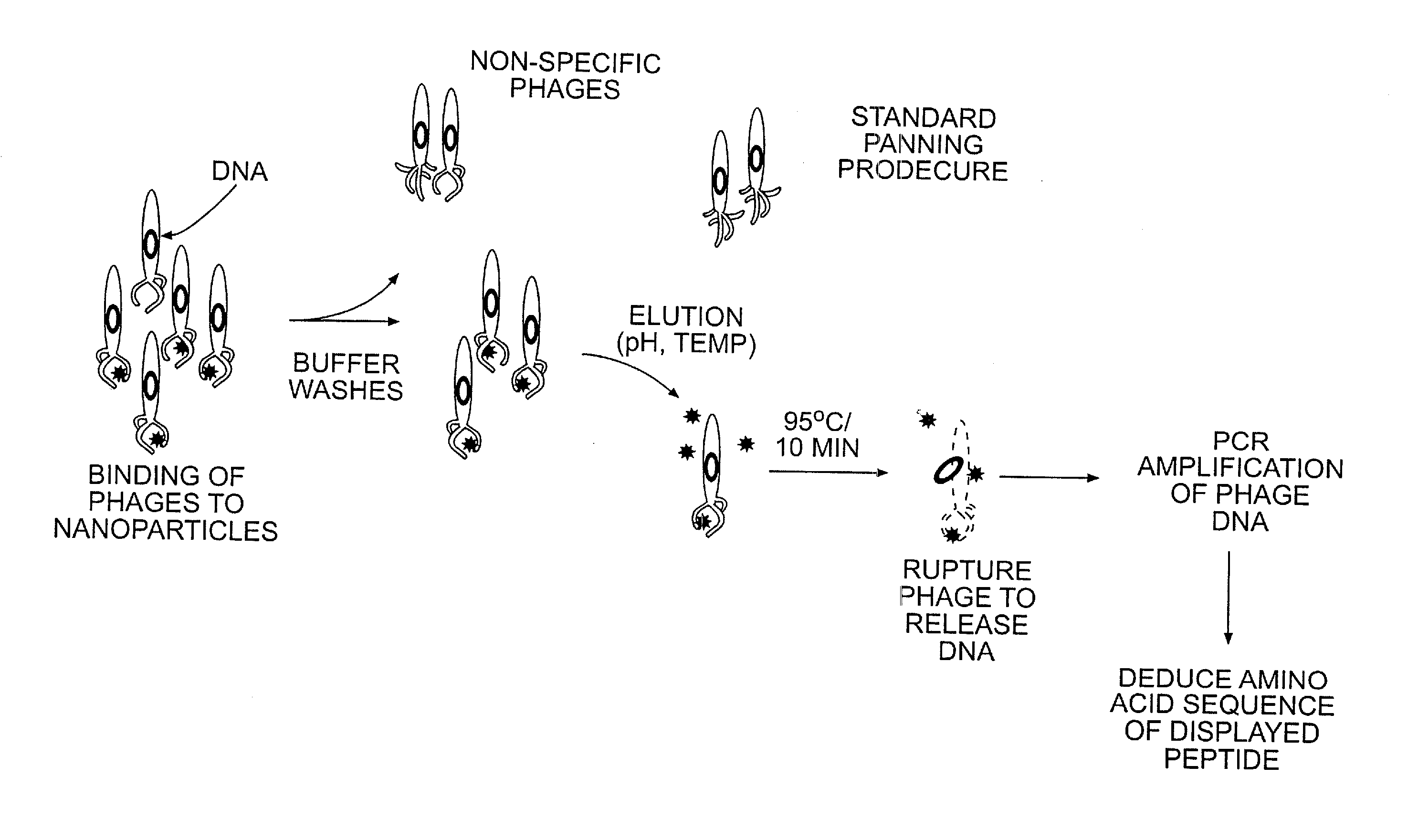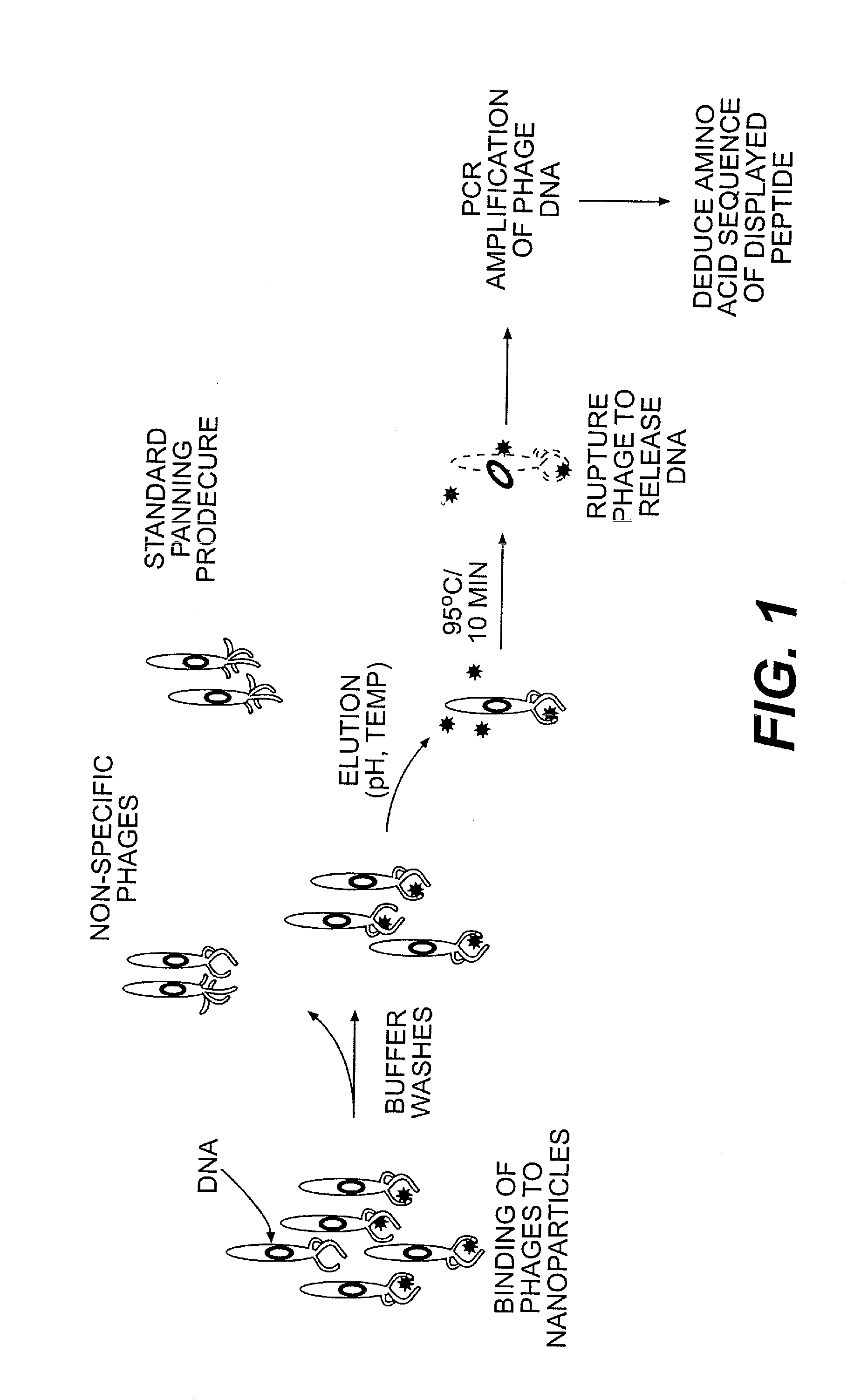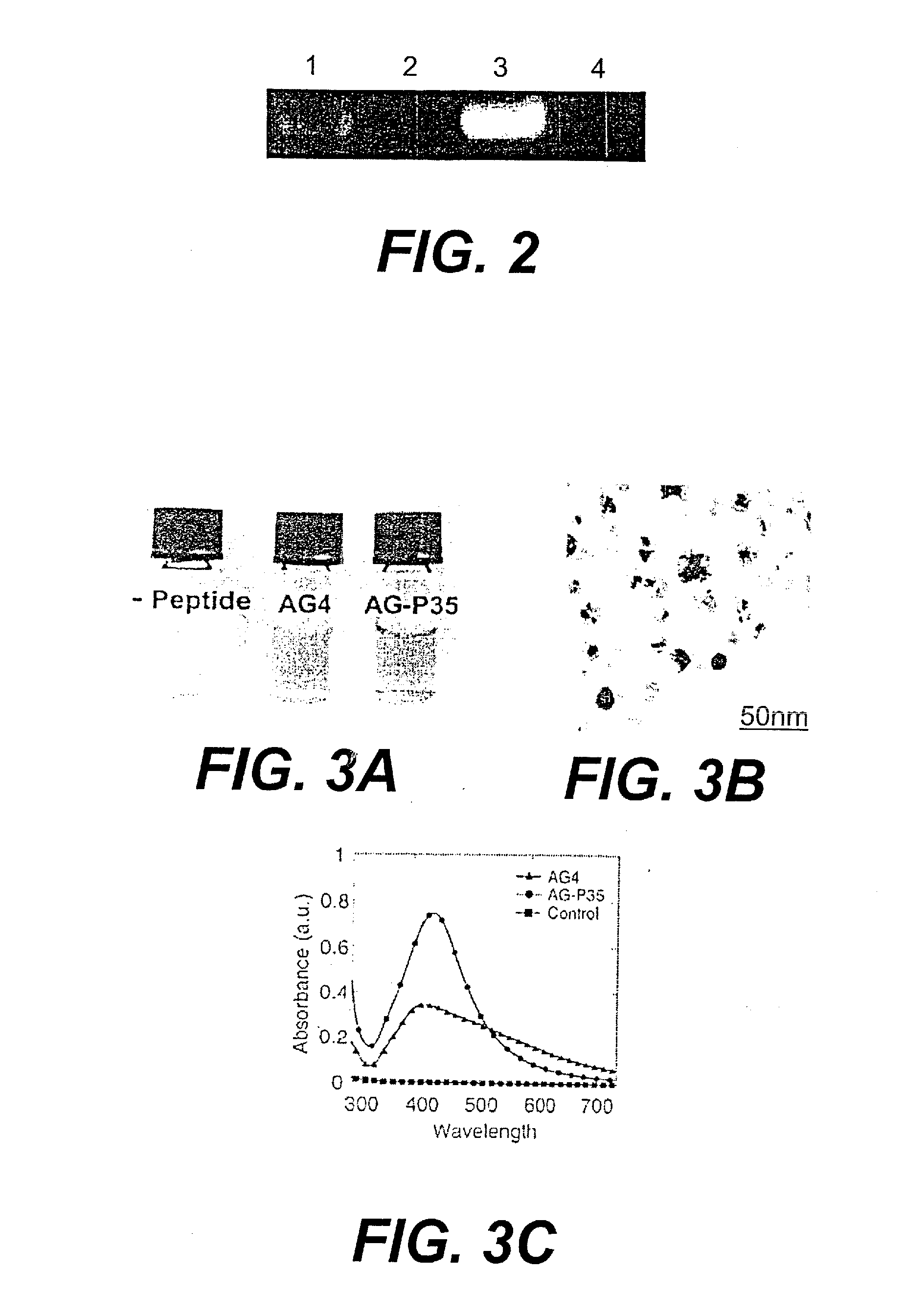Peptide templates for nanoparticle synthesis obtained through pcr-driven phage display method
a phage display and nanoparticle technology, applied in the field of peptides, can solve the problems of not being able to eliminate or reduce the levels of particular metals, difficult if not impossible to achieve efficiently, and toxic ingredients that need to be removed from a site are the heavy metals which are extremely toxic and sometimes even radioactive, and achieve the effect of eliminating labor-intensive and inefficient procedures of phage amplification and relatively inexpensive manner
- Summary
- Abstract
- Description
- Claims
- Application Information
AI Technical Summary
Benefits of technology
Problems solved by technology
Method used
Image
Examples
example 1
Isolation and Identification of Peptide Templates on a Nanometric Scale Using the Methods In Accordance With the Invention
Overview
[0046]Phage peptide display libraries are commonly used to select for peptides that bind to inorganic surfaces (metals, metal oxides and semiconductors). These binding peptides can serve as templates to control the nucleation and growth of inorganic nanoparticles in vitro. In this report, we describe the identification of a unique set of sequences that bind to silver and cobalt nanoparticles from a phage peptide display library using a Polymerase Chain Reaction (PCR)-driven method. The amino acid sequences obtained by the PCR method are a distinct set of sequences that would otherwise be missed using the regular panning method. Peptides identified by the method described here are also shown to function as templates for the synthesis of silver and cobalt nanoparticles.
Background
[0047]Nanomaterials have unique optical, electronic and magnetic properties tha...
PUM
| Property | Measurement | Unit |
|---|---|---|
| pH | aaaaa | aaaaa |
| temperature | aaaaa | aaaaa |
| pH | aaaaa | aaaaa |
Abstract
Description
Claims
Application Information
 Login to View More
Login to View More - R&D
- Intellectual Property
- Life Sciences
- Materials
- Tech Scout
- Unparalleled Data Quality
- Higher Quality Content
- 60% Fewer Hallucinations
Browse by: Latest US Patents, China's latest patents, Technical Efficacy Thesaurus, Application Domain, Technology Topic, Popular Technical Reports.
© 2025 PatSnap. All rights reserved.Legal|Privacy policy|Modern Slavery Act Transparency Statement|Sitemap|About US| Contact US: help@patsnap.com



